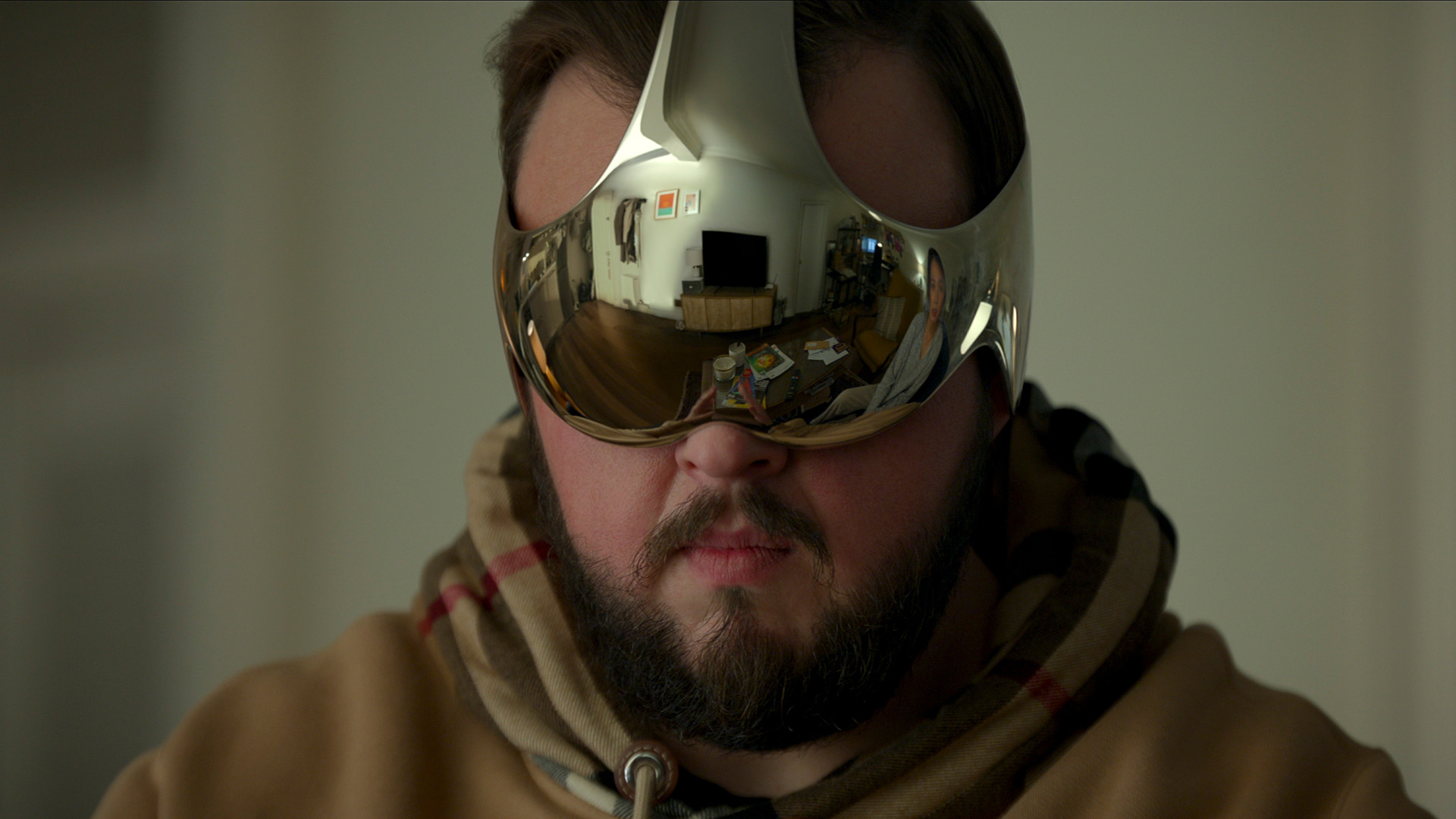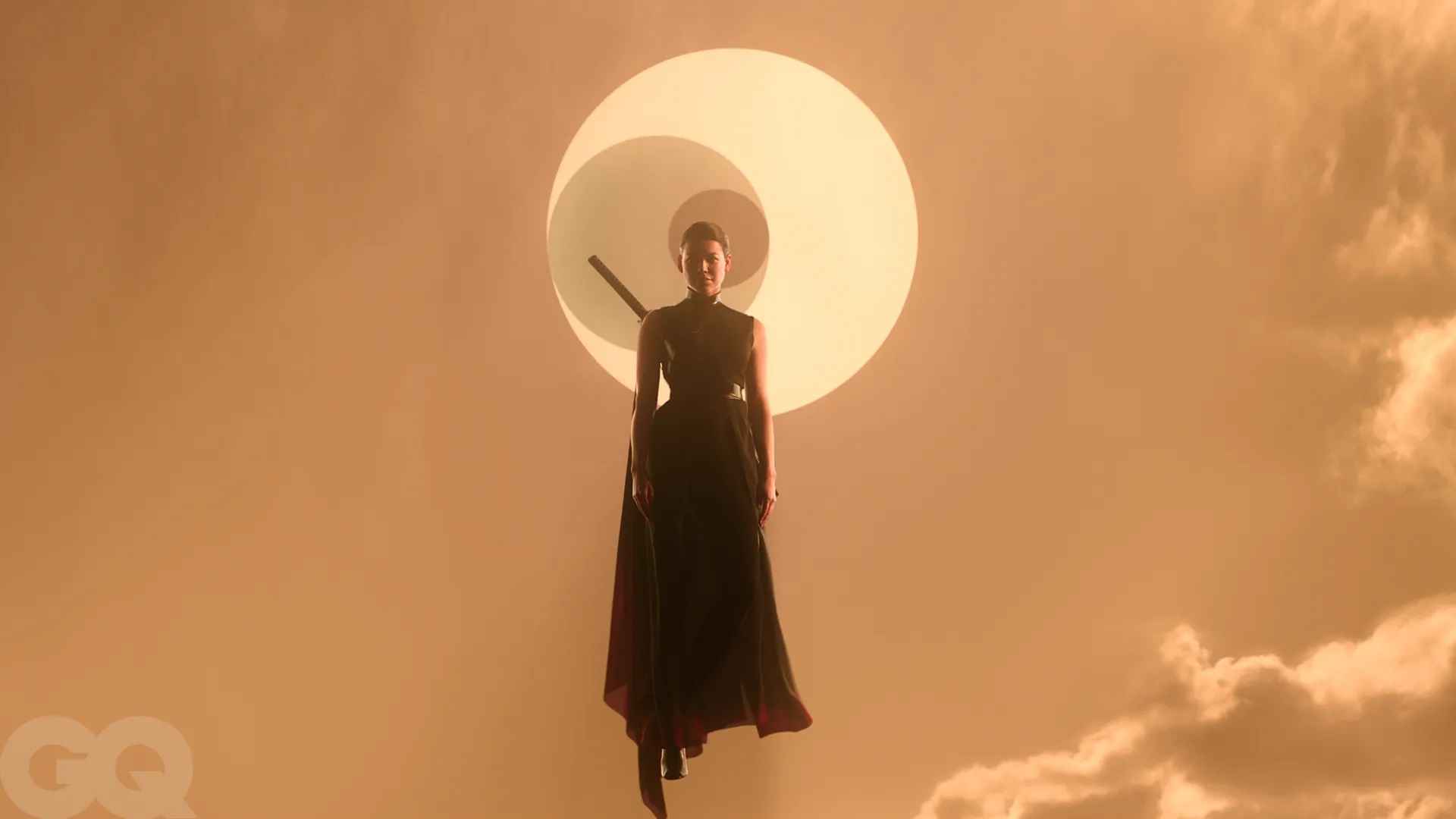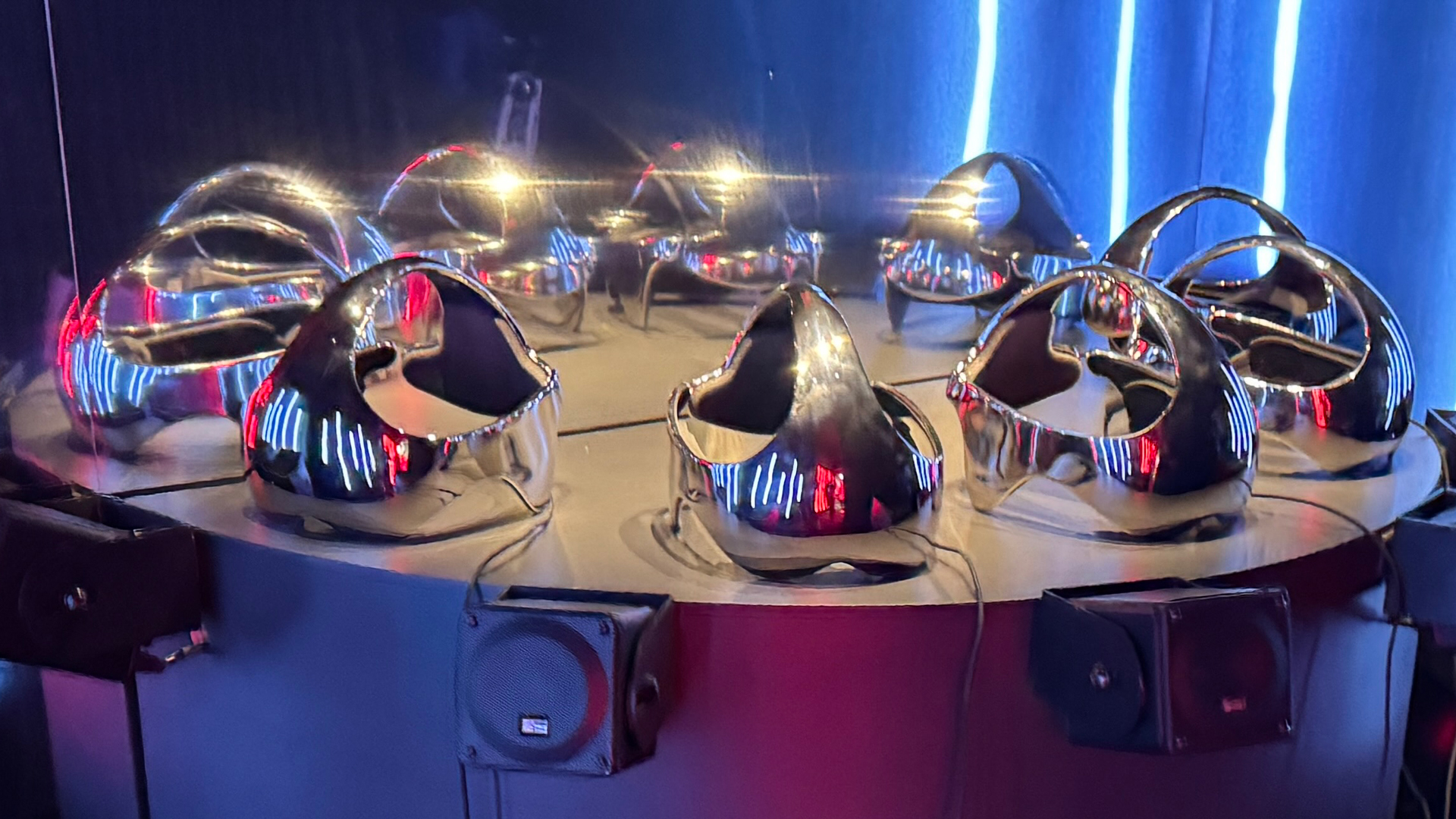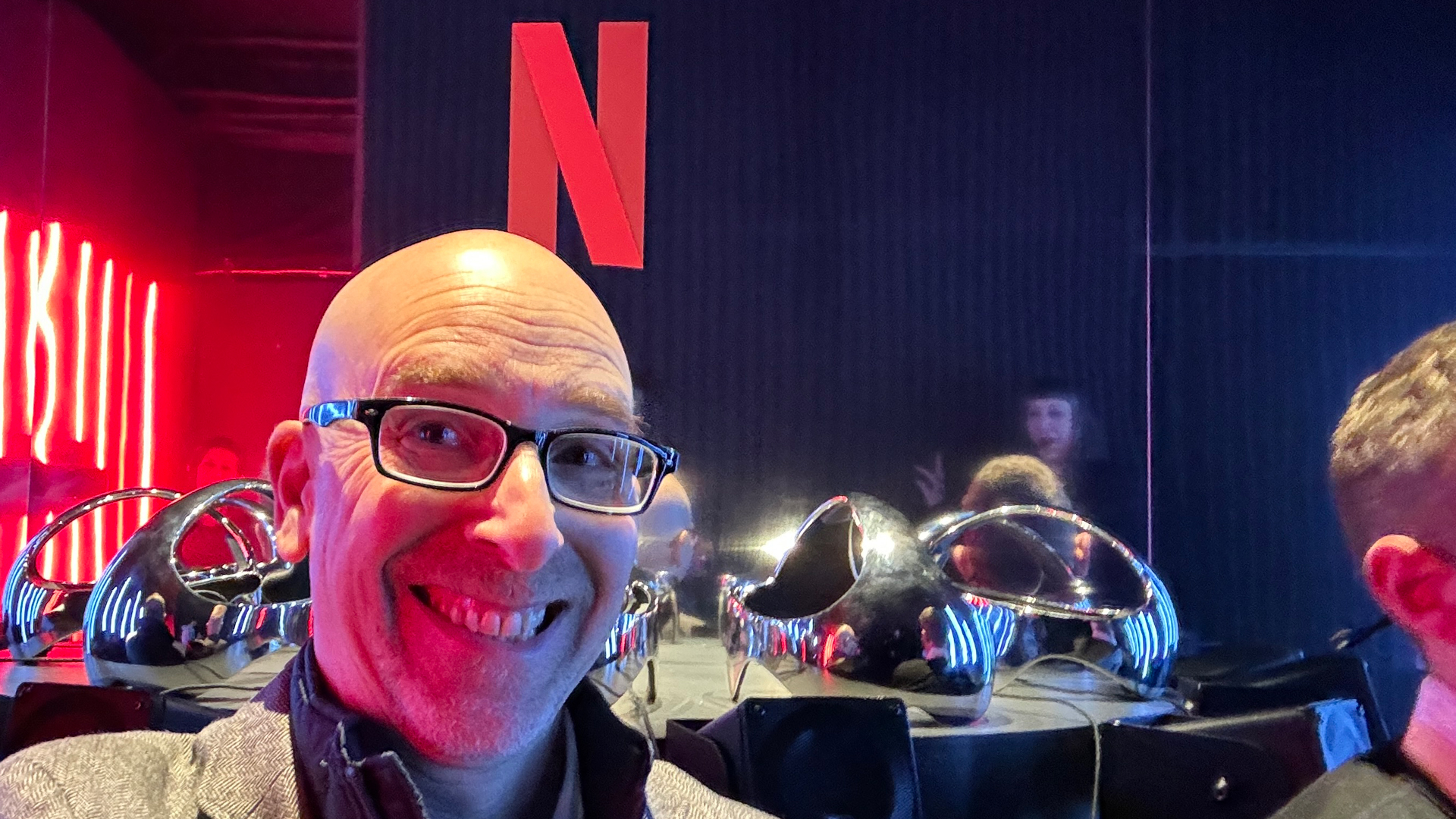3 Body Problem's headset is not the VR we want – it's our worst nightmare
Perfectly awful

If I've learned nothing else from watching Netflix's 3 Body Problem it's that there are limits to what I want to experience in virtual reality.
I haven't watched the full season of the sci-fi drama, which means I'm unlikely to spoil anything (but if you'd rather be careful, I suggest you stop reading now).
However, I've seen enough to be both blown away by the alien-built headset technology and also absolutely horrified by what this wearable gear can do.
For those who haven't dipped into the show, which is based on an acclaimed novel, the story revolves, in part, around alien contact with inhabitants of a dying planet. We apparently reached out to them first, and they answered enthusiastically, and now seem to be enlisting humans in an effort to save their planet, possibly by destroying all of us.
The headset plays a crucial role in the plot in that it's being used to recruit the earth's brightest minds (or at least I thought it was).
Wear this at your peril
As a technologist, I have a habit of fixating on technology in TV and movies, even when it's only there to advance the plot. I don't think I'm alone in this, and I have good reason. When it comes to innovation, the past (or the future as depicted in the past) is prologue. Tom Cruises' gesture-based computers in Minority Report presaged our own gesture-based, eye-tracking Apple Vision Pro. Most sci-fi films and movies hand characters ultra-thin transparent smartphones and tablets that are now starting to seem less like fantasy and more like near-term reality,
3 Body Problem's headset, though, is not the same kind of near-future incremental tech fantasy. The metallic headsets are vastly more powerful than the best VR gear, including Meta Quest 3 and Apple's Vision Pro.
Sure, the show's headset probably uses both eye- and gesture tracking but most of its best work appears to be at a neural level. The headset not only tracks brain activity, but it fills it with imagery and experiences that could best be described as lucid dreaming.

For as much as we can see, hear, and examine in current VR, headsets like Vision Pro can't deliver taste, smells, touch, or sensations. Yes, you could strap on some haptic gear to feel a virtual gut-punch but none of that hardware is natural or organic. It's a poor simulation of the real feel of touch, slap, hug, or kiss.
In 3 Body Problem, headset wearers can taste dirt, smell body odor, and feel a blade slicing through their neck. No one is claiming that what the characters see and feel is real. In one scene, a character reminds her companion that, while they appear to be boiling alive, "it's not real" and with that simple phrase, she's able to ignore the psychic pain, dive down to the bottom of the pot and touch the base to enable a core game function (fast forward).
The show struggles with realism, and to immerse yourself in this world, you must employ a fairly strong suspension of disbelief. Requisite for buying into the show's conceit is an acceptance that extraterrestrial life is real, that there's a technology that can erase people from not just videos but the actual view, and that a headset with no visible technology can alter your brain waves in such a way that you completely buy into the fiction it's delivering.
Inside the fantasy
I will grant the show creators (Game of Thrones showrunners D.B. Weiss and David Benioff) this, they get the initial VR headset experience right. Every time someone puts on the stylish headgear, they see their own eyes, which then merge together before they're thrust into the fully immersive and often dangerous 360-degree environment.
There's almost zero insight into how these headsets work. We know nothing of how they're powered and I noticed that even when seated in their slightly Vision Pro moon-case-like containers, there's no indication that they're charging up. Maybe the headset and case charge wirelessly.
While the headsets are too thin to hold much battery, I do believe they could house a decent Qualcomm Snapdragon AR2 Gen 1 chip. Do I think that chip has the processing chops to power the 3 Body Problem's fictional game? No, I do not.


The headset looks like stainless steel but that would be too heavy and uncomfortable for the head. I'll grant that this is probably some alien alloy. By the way, I wore a replica of the headset at Netflix's 3 Body Problem activation at CES 2024. It was made of plastic and offered just an OK VR experience. At various intervals, Netflix pumped heat, cold, and wind into the room to approximate the show's in-game experience. (see my TikTok below).
Whatever the technology, I don't want this level of immersion. For one thing, I never want to know what it would feel like to be sliced in two by a ninja blade. For another, this is just the kind of experience that might encourage some to never return to the real world.
Perhaps I simply don't get the point of this show. For me, it's about a VR experience gone awry. More discerning viewers will probably connect with the parable of stability and chaos and how if we don't take care of our world, someone or something will come to take it from us, while also trapping us in VR that looks like fun but is surely our worst VR nightmare.
@techradar ♬ PLAYOFFS - HYMN & Slip.stream
You might also like
Get daily insight, inspiration and deals in your inbox
Sign up for breaking news, reviews, opinion, top tech deals, and more.

A 38-year industry veteran and award-winning journalist, Lance has covered technology since PCs were the size of suitcases and “on line” meant “waiting.” He’s a former Lifewire Editor-in-Chief, Mashable Editor-in-Chief, and, before that, Editor in Chief of PCMag.com and Senior Vice President of Content for Ziff Davis, Inc. He also wrote a popular, weekly tech column for Medium called The Upgrade.
Lance Ulanoff makes frequent appearances on national, international, and local news programs including Live with Kelly and Mark, the Today Show, Good Morning America, CNBC, CNN, and the BBC.